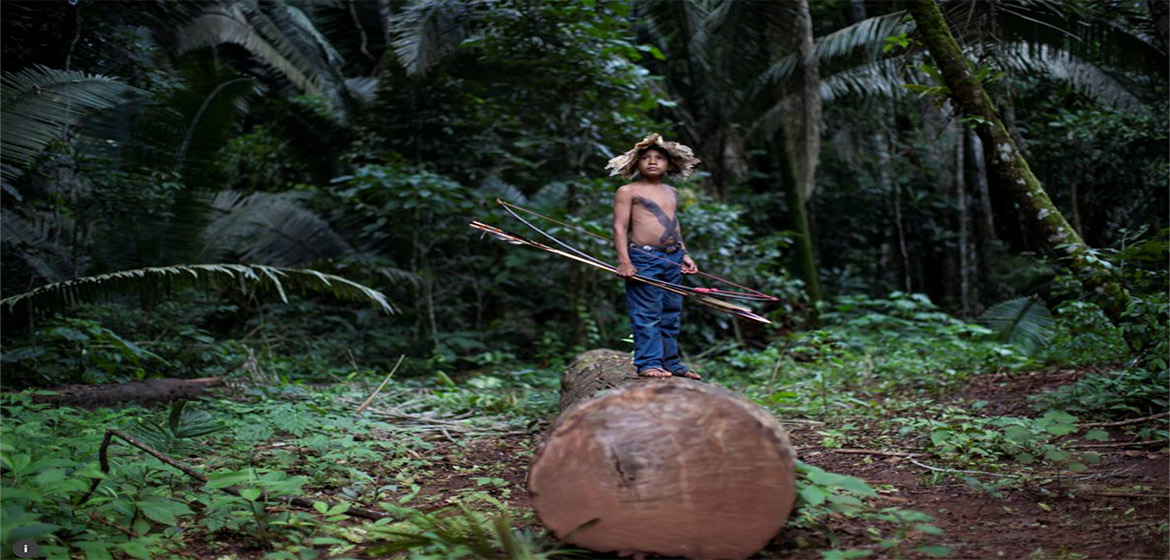by | FAO
Recognizing the rights of indigenous people can conserve tropical forests better than practically any other alternative
David Kaimowitz is manager of the Forest and Farm Facility of the .
Global leaders have never been more serious about addressing threats to the climate and the environment than they are in 2021, urged on by public outcry and growing awareness that we are approaching a decisive moment in the global battle to address climate change, biodiversity loss and the .
Financiers are agreeing to in their investments, the United States has and political leaders globally are promising at upcoming biodiversity and climate events, in May, the second in November.
And yet, one solution remains largely untapped in the search for cost-effective strategies for stopping the destruction of the natural world: a growing body of evidence suggests that Indigenous Peoples and local communities in tropical forest countries represent an effective and affordable strategy for addressing deforestation and biodiversity loss.
But how strong is the evidence, and how confident can policymakers be that bolstering communal land rights is a climate solution? A by the Food and Agriculture Organization of the United Nations (FAO) and the Fund for the Development of Indigenous Peoples of Latin America and the Caribbean (FILAC, in Spanish) shows unquestionable evidence that this is so.
The report analyzes the findings of 300 research papers, revealing for the first time the extent to which climate science supports strengthening the rights of Indigenous Peoples and local communities over forests of Latin America.
Recognizing and enforcing the rights of forest peoples can conserve tropical forests better than practically any other alternative, the report shows.
Tropical forests play a vital role under any scenario for slowing climate change. They prevent extreme shifts in temperatures and encourage the rainfall that makes farms more productive and prevents forest fires. Experts warn that losing the forests could bring the Amazon to a climate tipping point, as droughts and fires spread.
According to the report, healthier forests mean richer and more diverse plant and animal life. Brazil’s indigenous territories have more species of mammals, birds, reptiles and amphibians than do all the country’s other protected areas. Two-thirds of Bolivia’s vertebrate species and 60% of its plant species can be found in just two indigenous territories: the Tacana and Leco de Apolo.
Among Indigenous Peoples and local communities, traditional cultural practices have emerged over time, benefiting community members, including women and youth and serving as a source of status, pride and economic well-being. Tied powerfully to place, this knowledge for supporting global conservation goals.
Another included in the FAO/FILAC report looked at areas of the Amazon Basin between 2003 and 2016, revealing that forests managed by Indigenous Peoples had lost less than 0.3% of their carbon. But lands that were neither indigenous nor protected areas had lost 3.6% of their carbon.
Such findings cited in virtually all the papers reviewed in our new report, offer a scientifically proven strategy to policymakers and donors who seek to mitigate climate change, conserve biodiversity and encourage the sustainable management of tropical forests.
A policy built around formal recognition and enforcement of the collective land rights of Indigenous Peoples and local communities could also protect and revitalize their culture and traditional knowledge, whose value in protecting vulnerable ecosystems is only now beginning to be revealed. The time to act is now.
The protective role of Indigenous Peoples in Latin America . Between 2000 and 2016, the area of large blocks of undisturbed forests in indigenous territories fell by 20% in Bolivia, 30% in Honduras, 42% in Nicaragua and 59% in Paraguay. And in Brazil, from 2016 to 2018, deforestation rose 150% in the country’s Indigenous territories.
Driving the destruction are industries such as mining and oil, as well as invasions by ranchers and settlers, who burn and bulldoze land to make way for cattle and crops.
According to the Forest Governance by Indigenous and Tribal Peoples report, Indigenous Peoples and local communities in Latin America care for 200 million hectares of forest to which they have recognized land rights. But with forests increasingly under siege, and despite the proven effectiveness of helping communities to cover some of the cost of being good forest stewards, those efforts are being woefully underfunded.
In a year that offers unprecedented opportunities for global leaders to protect tropical forests as a solution for slowing climate change, the evidence points to a clear path for achieving that goal in the countries at ground zero. The science is clear: donor nations should support Latin American efforts to recognize and enforce the rights of indigenous Peoples to their territories, while also investing in the people who already are keeping the forests standing.
Source:
Related to SDG 13: Climate action, SDG 10: Reduced inequalities and SDG 16: Peace, justice and strong institutions



